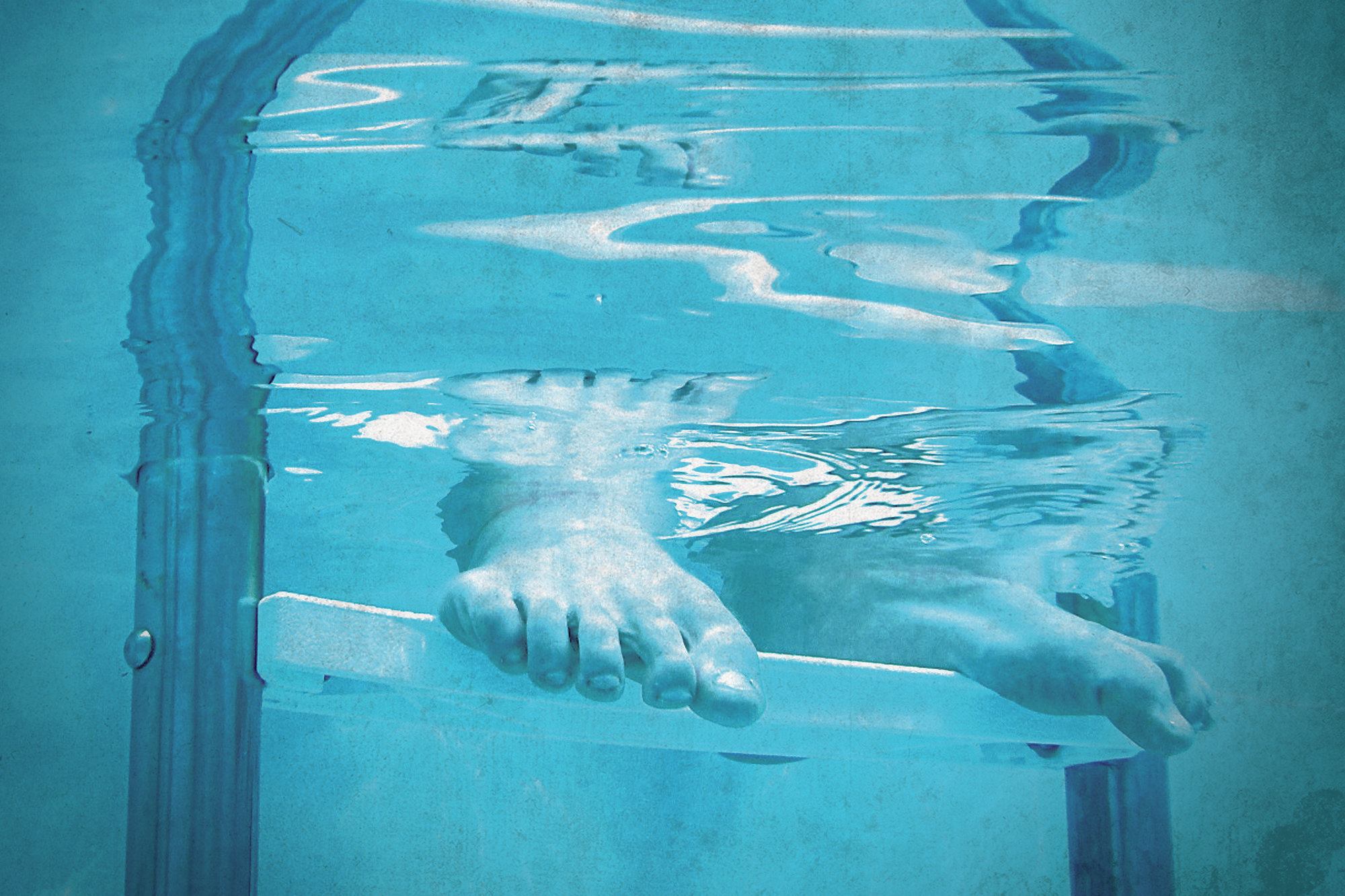When crises arise, aquatics facility operators must decide how to overcome them. This was the driving force behind the 2013 Aquatics International Virtual Conference, “Game On: The Five Toughest Obstacles Today’s Facility Operator Faces — and the Secrets to Overcoming Them.” From social media disasters to bankrupt cities, scandals and safety events, the five webinars and keynote from the conference are now available for free playback.
Keynote: No legs, no limits
Rudy Garcia-Tolson, three-time Paralympian and Ironman finisher, spoke about his dreams and drive to excel — despite having his legs amputated when he was a young child.
The 25-year-old said he had 15 operations before he was 5 years old to correct a birth defect, and by that time, he was fed up with being confined to a wheelchair.
“I remember telling my grandma, ‘I want the doctors to cut my legs off,’” he said, likening it to having his chains removed.
“I tell people every day that my legs are my challenge and the only disability I may have once in a month or once in a year is a negative attitude.”
When Garcia-Tolson was 6, his parents took him to a therapeutic facility for challenged athletes where an instructor suggested he join a swim team.
“Right away I had their attention,” he said of his able-bodied teammates. “I was the kid with no legs.”
At meets, he came in last time and time again, so he set a goal “to beat a kid with legs.” Accomplishing that gave him a thrill he remembers well to this day, and when he was 8, he set the goal of competing in the Paralympics.
That led to his involvement in the Challenged Athletes Foundation as a spokesman for the past 17 years. He’s mentored other amputee kids, offering advice about their opportunities and giving them support.
“I am who I am because of the challenges I have been through,” Garcia-Tolson said. “I think if I had legs, I would be lazy.”
Social Media: How to avoid social media disasters
Navigating social media is a tricky prospect, but Sharlyn Lauby, president of ITM Group Inc., outlined seven steps to using this marketing tool effectively.
“Social media is honestly not a fad anymore, and we have to recognize that as business professionals,” Lauby said. “People are talking about us whether we like it or not.”
So what should facility operators watch for?
1. Monitor social media channels.
2. Respond in a timely fashion.
3. Investigate the situation.
4. Respond at the flashpoint.
5. Create a credible presence on social media.
6. Educate your employees.
7. Set clear guidelines.
Lauby pointed out that the best time to have conversations about how to handle a public relations crisis on social media is before it happens. Watching other companies go through it presents an opportunity to talk to your team about how you would react, she added.
“If it happens on social media, respond on social media,” Lauby said. “If you make a mistake, own up to it.”
But whether or not to have a written policy for your employees on social media use depends on your company culture, she added. If you already have a computer use policy written into your employee handbook, why not roll social media into it?
Safety: The new requirements of risk management
Aquatic accidents are a nightmare scenario for facility operators. Well-trained lifeguards and staff are hired to protect patrons, but still unforeseen events happen.
So how does a facility mitigate its risk when an accident occurs?
For Gregory Anderson, a board-certified business litigation and civil trial attorney, it’s about a thorough review of the case.
“If you know some of the signs to look for, you can start to narrow your processes and probabilities that it was one thing or another,” he said. “If you’re a risk manager or a manager of a large, sophisticated facility, having some idea about where the trends are can be very helpful.”
Anderson spoke about one case he worked where an 8-year-old swimmer drowned after her swim coach and facility lifeguards cleared the pool when a lightning alarm sounded. The girl was last seen on the top rung of the ladder, exiting the pool. But she never got on deck, and her body was found nearly half an hour after the pool was cleared.
In reviewing the girl’s medical records and autopsy results, Anderson and his team found that she had been having fainting episodes that the parents didn’t tell the coach about and probably had an undiagnosed heart arrhythmia.
“This is one of those cases where, at the mediation, there was not a dry eye in the place. It’s just tragic,” he added.
By knowing the regulations and what experts are saying about such events, Anderson said facilities can manage the risk factors.
However, he doesn’t agree with laws that require particular equipment and would rather see recommendations that allow each facility to decide what’s best.
Water Quality: The next threat and how to avoid it
RWIs are a large concern for facility operators. An outbreak can shut down a pool until the issue is resolved, damaging a facility’s reputation and/or causing revenue loss.
Preventing these outbreaks is helped by understanding the risks and effectively educating swimmers, said Michele Hlavsa, chief of the healthy swimming program at the Centers for Disease Control in Atlanta.
“It’s framing for swimmers that they control the quality of the water,” she added. “They play such an important role.”
She presented a study conducted by the CDC in the metro Atlanta area that found 75 percent of tested facilities had some kind of microbe. Many were harmless and naturally occurring E. coli and pseudomonas aeruginosa, though at higher levels than the CDC expected. Hlavsa said this study highlights the importance of being vigilant about cleaning, scrubbing and maintaining water quality of public facilities.
One of the factors could be swimmers not washing off before entering the pool, which is where the CDC’s education efforts come into play.
“[People] don’t think about swimming as being an issue,” Hlavsa said of people getting sick, noting they’re more worried about what they ate the previous day than about where they swam. Education is really key for controlling cryptosporidium. “We need to find better ways of managing it,” she noted.
Budget: Financing in a budget-starved environment
Getting a community to invest in an aquatic facility can be a hard sell, but Scott Hester, president at St. Louis-based Counsilman-Hunsaker, and Kevin Post, studio director/principal, said the trick is to showcase the benefits.
“We need to make sure everyone understands the value of swimming goes beyond just finances,” Post said.
That might mean defining the success of the facility in another way other than dollars, he added. In recreation, visits or programs that are offered and utilized might be a better measurement.
There are three types of funding models particularly used at aquatic facilities: subsidized, breaking even and positive cash flow.
“More and more communities are moving toward the break even model,” Post said, “where we will use taxpayer dollars to support the funding and construction of that facility to get it open. But past that point, we’ll want to make sure the ongoing revenues are enough to pay the ongoing expenses.”
One mistake many facilities make is separating the budget by expenses and revenue and not looking at them together. Post told an anecdote about a facility in the Northeast that viewed concessions as its biggest moneymaker — without looking at the expenditures of running the concession stand. When viewed together, Post said they found the concession stand was losing about $10,000 per year.
Charging a slightly higher admission rate for non-residents could also benefit the facility’s budget, Post said. If the facility isn’t drawing enough residents, “it may be a modest increase, only a dollar or two more,” he added. Hester said that facilities also can add improvements that enhance patrons’ experiences without changing the center’s footprint. Some of those include features like ziplines, climbing walls, obstacle courses or slides. Shade areas plus dry play zones can provide a better draw for patrons.
Hester also addressed the growing popularity of spray parks being built versus pools. “In a lot of cases, it’s budget-driven,” he said. Spray parks allow an aquatic-related experience on a tighter budget because municipalities don’t have to budget for lifeguards.
Lifeguarding: Make training into your best friend
Lifeguarding skills must be practiced frequently, said Pete DeQuincy, aquatic supervisor for the East Bay Regional Park District near San Francisco.
The amount of this practice depends on different factors, such as funding and staff availability. “Staff and site availability are huge,” he added. Because many lifeguards work part time, it makes it challenging to schedule training. But the training is necessary to increase skills and get the staff working as a team.
“Lifeguard skills are perishable,” DeQuincy said.
Generally, about four hours of training per week is required. Many facilities offer it in a single block of time, but that has a flaw. “You lose them after about an hour,” DeQuincy said.
Especially because staff tends to be 16- to 22-year-olds, the training is crucial, he added. “You have to participate with them,” DeQuincy said. “You have to work with them.”
Unlike firefighters and paramedics who respond to incidents, lifeguards are training to keep an injury from happening. “What they’re doing is prevention,” he added. “It’s a very big job.”
To hone skills, DeQuincy recommends a half an hour of quick drills every other day instead of lecture-type training. “We don’t talk about it,” he said. “We do it.” This helps to build the muscle memory and quick response needed to save lives.
DeQuincy recounted a story where a mother brought her choking toddler to the lifeguard stand and his staff snapped into action and rescued the child without thinking. “That’s what you want,” he added. “You don’t want the hesitation.”
To play these webinars in their entirety, please visit www.aquaticseducation.com to register for free.



